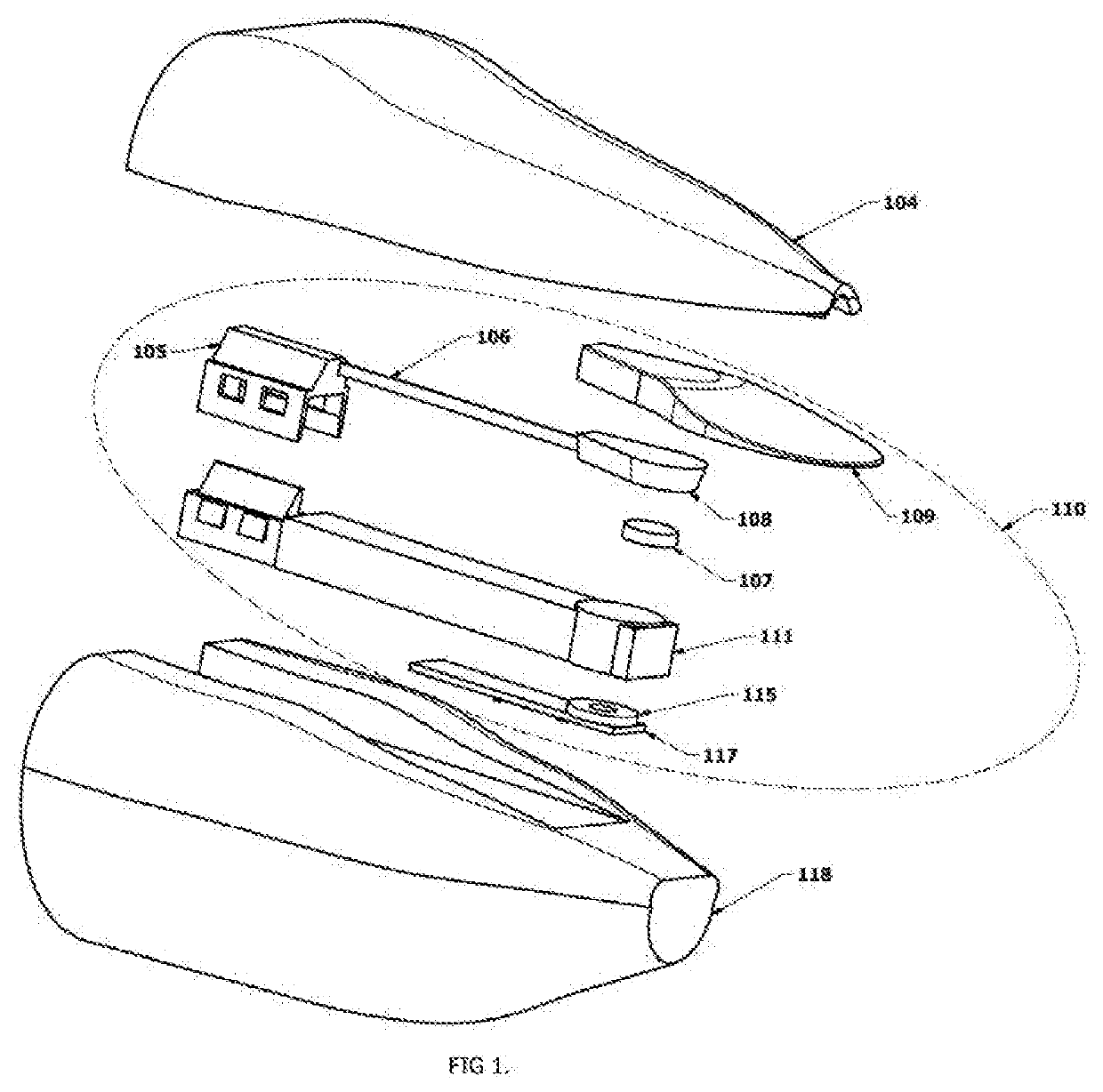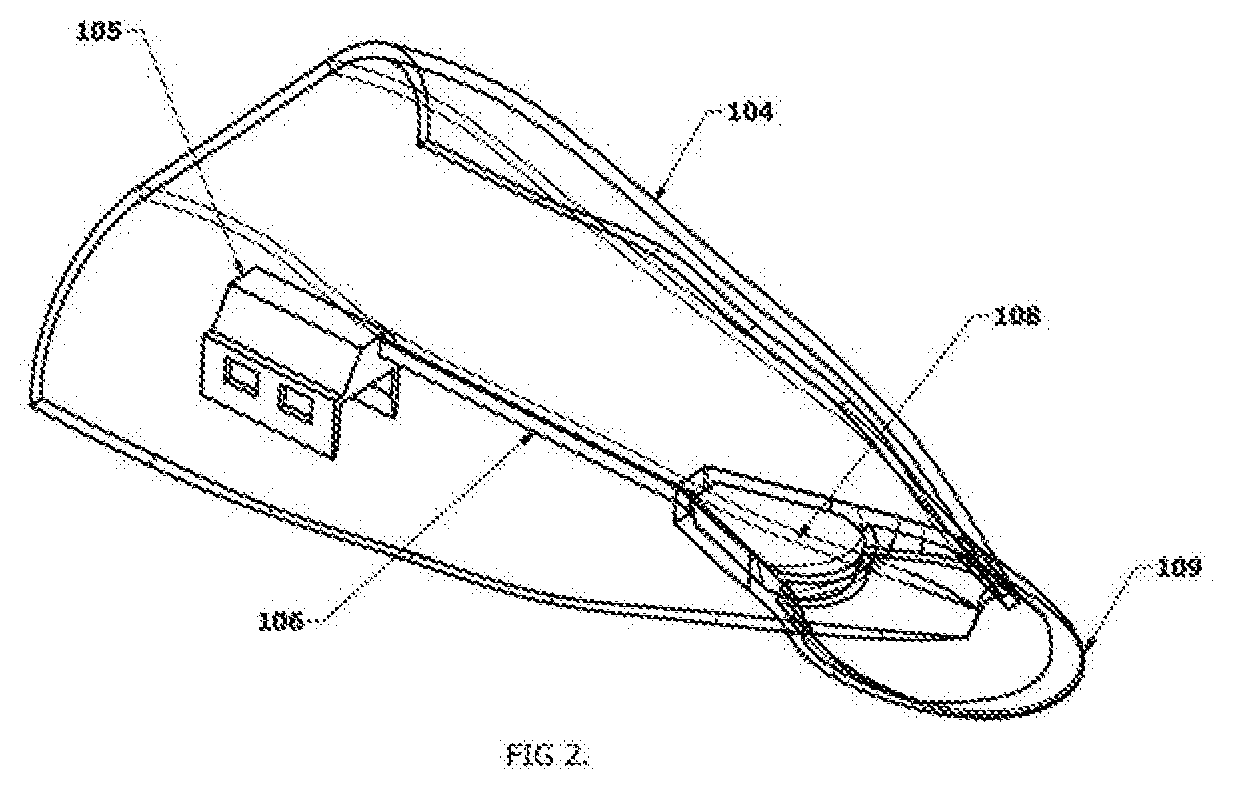Wildlife Decoy With Flapper Apparatus
a technology of flapper and decoy, which is applied in the field of waterfowl decoys, can solve the problems of poor battery life, heavy spinning wing decoy, lack of motion of traditional style static waterfowl hunting decoy, etc., and achieve the effect of improving battery life and quiet operation
- Summary
- Abstract
- Description
- Claims
- Application Information
AI Technical Summary
Benefits of technology
Problems solved by technology
Method used
Image
Examples
Embodiment Construction
[0030]The following description of exemplary embodiments is not to be taken as limiting but is for illustrating how the invention works in its elementary form. The scope of the invention is defined by the claims.
[0031]One main advantage of the invention is that it produces tail 109 motions with significantly less electrical power than competing products. Several competitors' decoys splash water, pump water, or spin plastic wings using traditional brushed electric motors through a pump or mechanical linkages and / or gears. The movement of air via wings which spin, or the movement of decoy appendages or movement of water requires much more power than the invention described here. Consequently, many prior decoys require much larger and more bulky batteries and motors to produce the desired motion. The side to side motion of the relatively light and flat tail 109 in the described invention creates little aerodynamic drag, and oscillates at the system resonant frequency, and is consequent...
PUM
 Login to View More
Login to View More Abstract
Description
Claims
Application Information
 Login to View More
Login to View More - R&D
- Intellectual Property
- Life Sciences
- Materials
- Tech Scout
- Unparalleled Data Quality
- Higher Quality Content
- 60% Fewer Hallucinations
Browse by: Latest US Patents, China's latest patents, Technical Efficacy Thesaurus, Application Domain, Technology Topic, Popular Technical Reports.
© 2025 PatSnap. All rights reserved.Legal|Privacy policy|Modern Slavery Act Transparency Statement|Sitemap|About US| Contact US: help@patsnap.com



